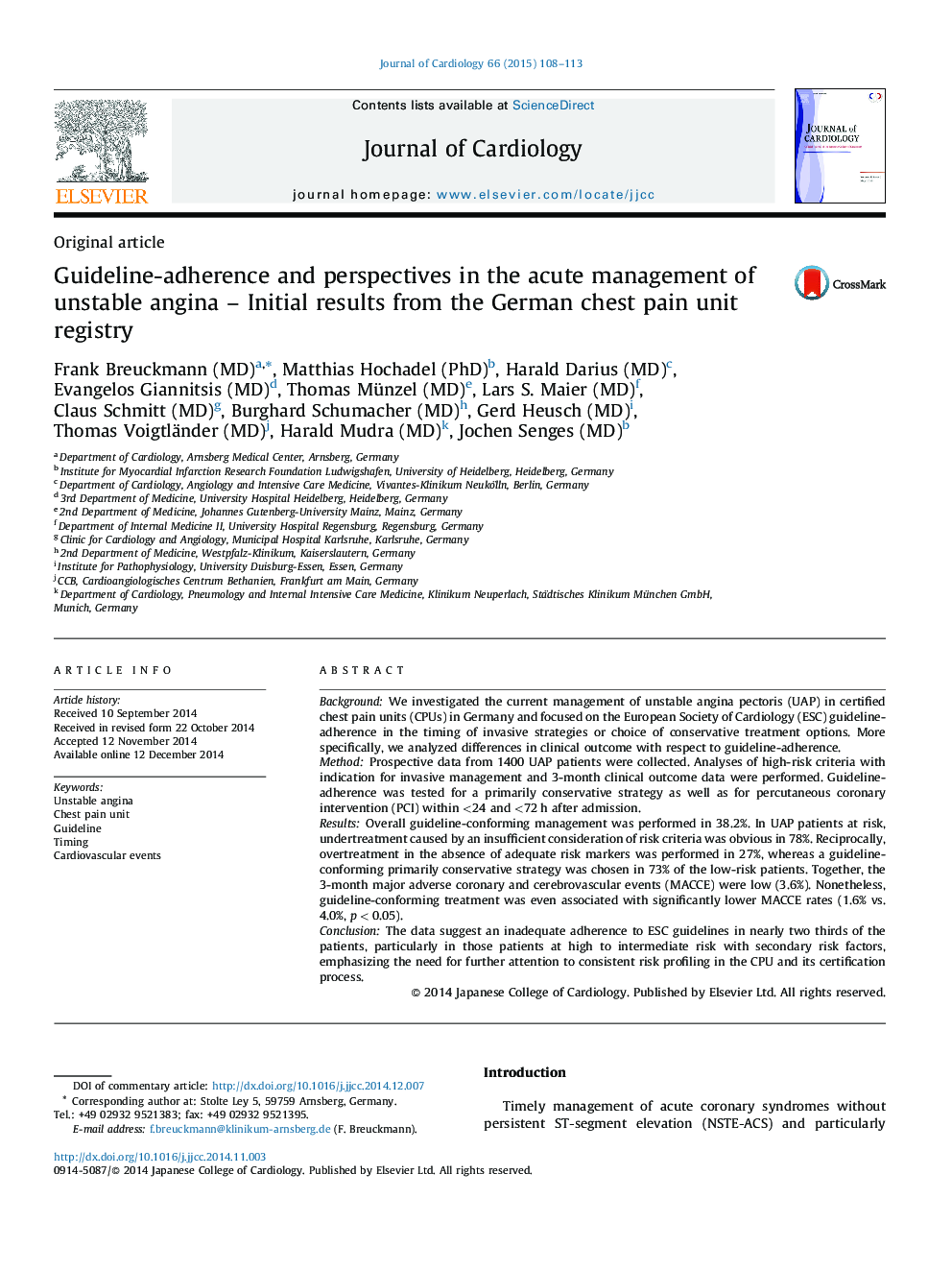| Article ID | Journal | Published Year | Pages | File Type |
|---|---|---|---|---|
| 2962940 | Journal of Cardiology | 2015 | 6 Pages |
BackgroundWe investigated the current management of unstable angina pectoris (UAP) in certified chest pain units (CPUs) in Germany and focused on the European Society of Cardiology (ESC) guideline-adherence in the timing of invasive strategies or choice of conservative treatment options. More specifically, we analyzed differences in clinical outcome with respect to guideline-adherence.MethodProspective data from 1400 UAP patients were collected. Analyses of high-risk criteria with indication for invasive management and 3-month clinical outcome data were performed. Guideline-adherence was tested for a primarily conservative strategy as well as for percutaneous coronary intervention (PCI) within <24 and <72 h after admission.ResultsOverall guideline-conforming management was performed in 38.2%. In UAP patients at risk, undertreatment caused by an insufficient consideration of risk criteria was obvious in 78%. Reciprocally, overtreatment in the absence of adequate risk markers was performed in 27%, whereas a guideline-conforming primarily conservative strategy was chosen in 73% of the low-risk patients. Together, the 3-month major adverse coronary and cerebrovascular events (MACCE) were low (3.6%). Nonetheless, guideline-conforming treatment was even associated with significantly lower MACCE rates (1.6% vs. 4.0%, p < 0.05).ConclusionThe data suggest an inadequate adherence to ESC guidelines in nearly two thirds of the patients, particularly in those patients at high to intermediate risk with secondary risk factors, emphasizing the need for further attention to consistent risk profiling in the CPU and its certification process.
